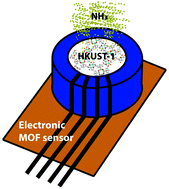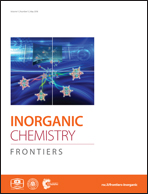Electronic metal–organic framework sensors
Abstract
Metal–organic frameworks (MOFs), a class of crystalline and porous materials, are synthesized through the self-assembly of organic ligands and inorganic metal nodes (ions or clusters). For the past few years, MOFs have been in the limelight due to their structural versatility and tuneable porosity, which have provided us with a promising outlook in several applications, such as gas storage and separation, sensing, drug delivery and catalysis. The recent intriguing demonstrations of MOF-based electronic devices have attracted considerable attention. This development is considered to be a significant achievement as it has transcended barriers such as the low conductivity or insulating properties of MOFs and the fabrication of MOF devices. Thus, the motivation of this review is to showcase the potential of MOFs as electronic sensor materials for the detection of molecules in the gas/vapour phase and highlight that MOFs can outperform other solid-state sensing materials. We discuss the performance of several MOFs that have been utilised for sensing a number of different gases and vapours such as humidity, volatile organic compounds, aldehydes, alkanes, trimethylamine, ammonia, hydrogen sulphide, nitric oxide and the nerve agent sarin. A literature overview on the four different types of electronic MOF sensor devices for the detection of molecules in the gas/vapour phase – impedimetric, chemicapacitive, work function based sensors with the Kelvin probe configuration and chemiresistive type sensors – is provided, wherein MOFs were incorporated as the (active) sensing layer.

- This article is part of the themed collection: 2018 Inorganic Chemistry Frontiers Review-type Articles


 Please wait while we load your content...
Please wait while we load your content...